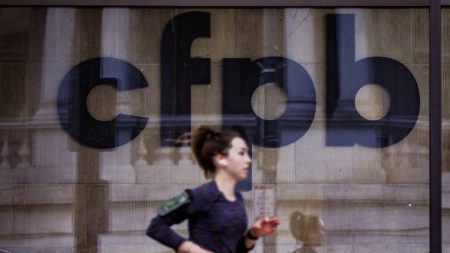When it comes to life insurance, it seems that a lot of people are in the dark about just how affordable it can be. In fact, according to the latest Corebridge Financial Life Insurance Awareness Survey, 47 percent of Americans overestimate the cost of a term life insurance policy, and another 41 percent simply aren’t sure how much it would cost. These numbers reveal a significant knowledge gap that keeps many people from getting the coverage they need.
Recently, I had the chance to sit down with Tim Heslin, President of Life Insurance at Corebridge Financial, to dig deeper into why these misconceptions persist and what can be done to close the gap. Heslin and I discussed everything from affordability concerns to how life insurance fits into a broader financial plan.
Why do people think life insurance is expensive?
One of the biggest reasons people avoid life insurance is because they assume it’s just too expensive. According to the Corebridge survey, 45 percent of respondents who don’t have life insurance said it’s because of the cost. But here’s the kicker: a huge chunk of those people either overestimated the cost or simply didn’t know how much it would actually be. It’s a gap in knowledge that keeps people from getting coverage. Heslin shared that this misconception is largely due to a lack of consumer education. Many people, especially those who might not have access to an independent financial advisor, are unaware of affordable term life insurance options. “All the stats are speaking to the same point,” Heslin explains. “Too many people don’t know how inexpensive life insurance can be. It’s those misperceptions around the cost that keep people from including life insurance in their overall financial strategy.”
47% of Americans overestimate the cost of a term life insurance policy
—Corebridge Financial Life Insurance Insights & Awareness Survey, August 2024
Rethinking the value of your policy
Many people end up leaning toward permanent life insurance because they’re worried they’ll waste money on a term policy that might never pay out. This fear often leads to a pricey commitment, with the realization years later that keeping up with those high premiums just isn’t practical. But let’s reframe this thinking: term life insurance isn’t all that different from auto or home insurance. You pay for coverage and peace of mind — not for an investment. You wouldn’t expect your car insurance premiums back if you never have an accident or hope for your homeowner’s policy to cash out if your roof never leaks. So why expect your life insurance to work any differently? The goal of life insurance isn’t to make money; it’s to provide protection for the years your loved ones would need it most without weighing down your finances.
What are people saying about the cost of life insurance?
It’s clear that many people struggle with understanding life insurance, and social platforms like Reddit are filled with questions and confusion. Let’s take a look at what some users are saying, and we’ll explore the misconceptions behind their comments.
“I was quoted $43/month as an 18 y/o female. I’m supposedly getting $230,000 in life insurance. I thought it was a good price but my mom thinks it might be kinda high.”
—Reddit user Aug. 20, 2024
This user raises a common issue: a lack of clarity on what type of life insurance they’re getting and whether it’s the right fit. Since the Reddit poster is quite young but their quote is relatively high, we can assume this is a permanent life insurance policy. At just 18 years old with no dependents, a permanent policy is likely unnecessary, but the fear of getting the “wrong” coverage can lead to hasty decisions. As Heslin explains, it’s crucial to understand how life insurance fits into your financial needs — and not just grab any policy that comes along.
“I’m insuring myself for my family’s sake… It’s a permanent policy, and so I’ve been told costs can be a bit more than term life insurance.”
—Reddit user Aug 20, 2024
There’s also a misconception about what life insurance is meant to cover. In this case, the poster took out a permanent policy to cover funeral expenses and support their family without realizing that a term life policy might have offered more affordable and appropriate coverage for their situation. Permanent policies often have significantly higher premiums than term, which can make them harder to maintain over time — especially when the policyholder doesn’t fully understand the long-term commitment.
“Somebody is trying to sell to me iUL for $210/month for 250k death benefit. I don’t understand much of the jargon but it says I can borrow or withdraw tax free and then there’s a bunch of riders like CMG, DBPR, FJR, LIBR, OPR, SAR. What are those? Do I need all of these? I’m 36 years old, doesn’t smoke.”
—Reddit user May 6, 2024
This is another case of someone not understanding what they’re buying. IUL stands for indexed universal life which is a type of permanent insurance. All the riders they listed are likely contributing to this expensive rate. Since this person isn’t even sure what the rider acronyms stand for, they probably don’t need all that additional coverage. For a 36-year-old, a term policy will be much cheaper compared to this IUL policy which costs over $200 every month. This Reddit poster should meet with an experienced agent who they are comfortable asking questions to to determine if an IUL is truly what they need. The key here is understanding what life insurance is actually meant to protect and not overcomplicating a straightforward need.
It’s clear from these discussions that a lot of confusion comes from a lack of education and understanding about how life insurance works and who needs it. A common theme in my discussion with Heslin was that the misunderstanding of life insurance costs and coverage options often leads people to make impulsive or uninformed decisions. He notes, “It’s vital to match your life insurance with your stage in life and overall financial strategy, rather than guessing at what seems right.”
How much does life insurance actually cost?
When it comes to life insurance, cost is one of the biggest factors on people’s minds. The price tag depends on many factors, but the type of policy is key — and there’s a big difference between term and permanent life insurance. On average, permanent policies like whole or universal life cost 10 to 15 times more than term life policies. Why? Permanent life insurance comes with a savings component that builds cash value, which can be a great financial tool but comes at a premium. In contrast, term life insurance is designed purely for coverage over a set period, making it far more affordable for most families.
As the Corebridge survey points out, the life insurance monthly cost for a healthy 30-year-old with a 20-year term policy worth $250,000 would be around $15. However, the survey also states that only 11 percent of respondents accurately estimated this cost, while 47 percent overestimated the cost and 41 percent didn’t know at all. This shows that people often assume life insurance is more expensive than it actually is, preventing them from seeking out affordable options.
It’s also important to understand that term life insurance often fits the bill for the majority of families, offering financial protection when it’s needed most, like raising children or paying off a mortgage. Permanent policies can be a great fit for certain situations, such as high-net-worth individuals, business owners or families with lifelong dependents who need long-term support.
The cost of life insurance is influenced by various factors: age, health, lifestyle habits and the amount of coverage you choose. The fewer risk factors you have, the more affordable your premium will likely be. Because each insurer weighs these factors differently, it’s smart to get multiple quotes from various companies to find the best product that meets your needs.
What to do if your life insurance needs change
Life isn’t static, and neither are your financial needs — that’s why life insurance should be flexible enough to evolve with you. Heslin says it perfectly, “Life insurance can morph with your stages of life. Working with a financial professional can help ensure your coverage keeps up with big life changes like marriage or having kids.”
Renewable and convertible term life
If you need more flexibility, renewable and convertible term life insurance policies can help. A renewable term policy gives you the option to extend your coverage beyond the original term without the hassle of another medical exam. It’s important to note that your premiums do increase, however, once the initial term is over. But if you find yourself diagnosed with a chronic or terminal illness, it’s a beneficial option to keep that financial protection for your family since you aren’t required to go through underwriting again.
Convertible term life insurance offers a different kind of flexibility, allowing you to transition your term policy into a permanent one if your needs change over time. For example, if your financial responsibilities grow or you desire lifelong coverage, converting to a permanent policy could provide that long-term financial security without needing to go through underwriting again.
Laddering life insurance policies
Another strategy to match your evolving needs is laddering life insurance policies. This involves purchasing several term policies with staggered expiration dates, so your overall coverage decreases as your financial responsibilities lighten, such as paying off a mortgage or your children reaching adulthood. Laddering allows you to pay for the right amount of coverage at different life stages, ensuring you’re not over-insured or paying for coverage you may no longer need.
As Heslin emphasizes, life insurance should adapt to your life journey. By exploring these options, you can help make sure that your policy keeps pace with your evolving financial situation, offering just the right protection when and how you need it.
5 tips for getting affordable life insurance
Securing the best life insurance policy doesn’t have to break the bank. Here are five tips to help you find affordable coverage without sacrificing protection:
-
Buy as soon as you need it
The younger and healthier you are, the cheaper your life insurance premiums will be. Don’t wait until later in life when health issues might arise — lock in a low rate while you’re still young. As the Corebridge survey showed, 80 percent of people understand that life insurance is cheaper when you’re young, but many still delay, which only leads to higher costs down the road. -
Understand your options: traditional, simplified, guaranteed or accelerated
The traditional process of getting approved for life insurance requires a medical exam and health record assessments. If you’re not keen on needles or know your health is subpar, you might consider simplified- or guaranteed-issue policies, which offer coverage without the need for a medical evaluation. However, these policies tend to come with higher premiums and lower coverage limits. If you’re in decent health and just prefer to speed things along, a more affordable option is to choose an insurance company that offers accelerated underwriting. This can help fast-track the process by skipping an exam and offering quicker decisions while still considering your health profile. If you’re looking for a policy without too many hoops, be sure to weigh these options carefully. -
Prepare for a medical exam
If you do need to undergo a medical exam to get the best rates, prepare wisely. Avoid caffeine, alcohol and strenuous exercise in the 24 hours leading up to the exam, as these can elevate your blood pressure and heart rate. Drinking plenty of water and getting a good night’s sleep can also help ensure the best possible results. -
Choose term over whole or universal life
When affordability is your main concern, term life insurance is typically the most budget-friendly option. Unlike whole or universal life insurance, which builds cash value and comes with higher premiums, term insurance offers pure protection for a set period at a much lower cost. As Heslin says, “Term insurance is a great way to provide essential protection without overextending your budget.” -
Compare quotes and shop around
It pays to shop around and compare life insurance quotes from multiple providers. Different insurers weigh risk factors differently, which means the same individual might receive vastly different quotes from various companies. Take the time to review your options to make sure you’re getting the best deal for your needs and budget.
What is the insurance industry doing to better educate consumers?
Since the pandemic, the life insurance industry has taken significant steps to improve both awareness and access to coverage. Heslin states, “The pandemic showed the need for the product, and the industry responded by creating a more tempting process.” One of the biggest shifts has been the rise of accelerated underwriting, which simplifies the buying process.
Instead of a long series of medical exams and mountains of paperwork, many companies now use online health screenings and data to approve policies quickly — sometimes within 24 hours. Heslin emphasizes that this streamlined process is a win-win for both consumers and insurers, cutting down on time and hassle while making life insurance more accessible and appealing.
At the same time, companies like Corebridge Financial are focusing on educational outreach to close the knowledge gap and clear up confusion about life insurance options. Heslin highlights how important it is to help potential buyers understand that affordable term policies can be flexible and tailored to individual needs. The goal is to move away from the idea that life insurance is a “one-size-fits-all” product and show consumers how their coverage can evolve alongside their life stages.
Frequently asked questions
Read the full article here










